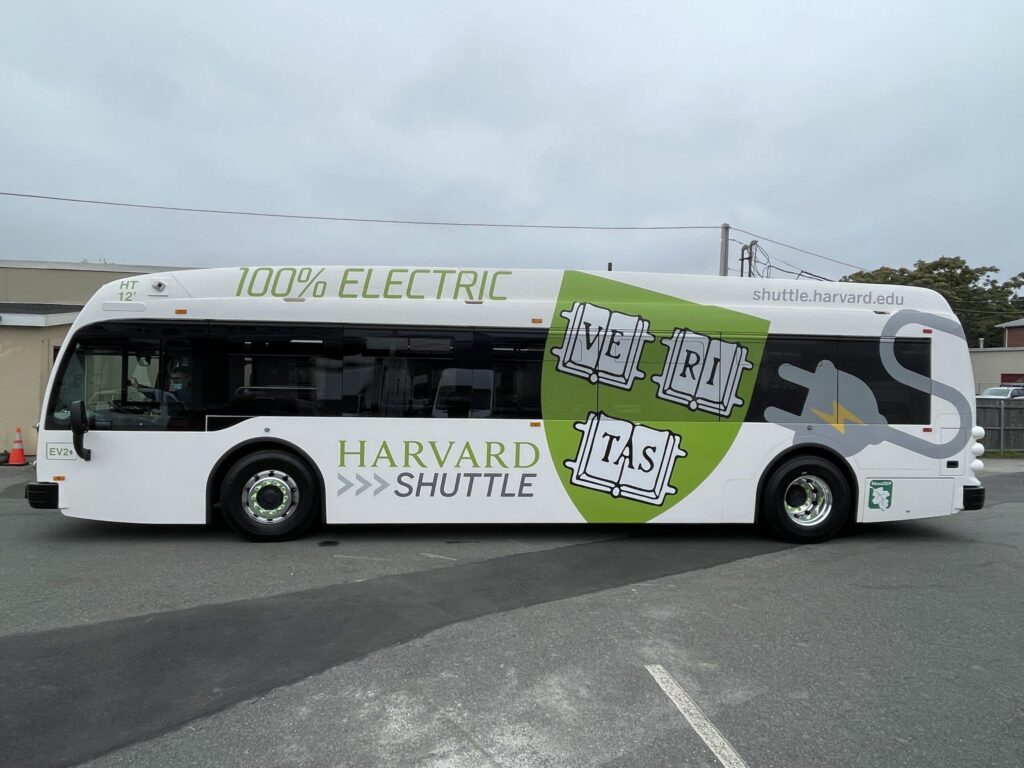UPDATE: So, You Want to Electrify Your Fleet?
Read the original blog post of May 26, 2022, So, You Want to Electrify Your Fleet, here now.
By John W. Nolan, CAPP
Wow! I cannot believe more than a year has passed since we bought four EV buses and installed DC fast charging stations on campus. As part of this program, Harvard Transit and Fleet studied performance metrics, durability, MPGe, and miles driven per charge and compared them to the specifications and expectations from the manufacturer.
One thing for certain is that the amount of data generated allows management to look into metrics and formulate KPIs in order to evaluate how the system (bus, bus chargers, bus dispensers, transformer, copper raceway, and switchgear) operates and to determine how efficient or not the system performed.
It has certainly been a year of learning and discovery as some expectations were met, some performance metrics were not, and some discovery was uncovered regarding system utilization and energy consumption.
As we continue to run through all the data, I will report in a later blog or article what the data showed, the real-time operational changes made, and new adjustments we made going forward. One big discovery was that the reality of “Pre-Conditioning” during the colder winter was never discussed before purchase. I am curious to know if others are aware of this necessity which draws additional energy to engage the bus systems, chargers, and batteries (to keep the systems at optimum operating temperature)) which significantly impacts the cost of operation.
I also previously looked at the cost of kWh as being one number for supply. However, there are a number of additional delivery and infrastructure costs that get charged and need to be included in the actual total cost of energy. More on this in the future data-driven article.
The learning curve for the timing of electrical charging was also difficult at the start of operations. We did not have any software to assist with bus charging sequences and learned more about the realities of increased cost or savings, depending upon when buses were charged and how many were charging. Our OEM has told me the software is coming and will be extremely helpful in assisting with future load management and cost control. With this knowledge of better information and management, we can achieve a 21% improvement over the next reporting year.
So, if you are looking to purchase buses in the near future, make sure to insist on the complete operational costs from the OEM in order to successfully calculate the total energy cost into your proforma.
The post UPDATE: So, You Want to Electrify Your Fleet? appeared first on IPMI.





